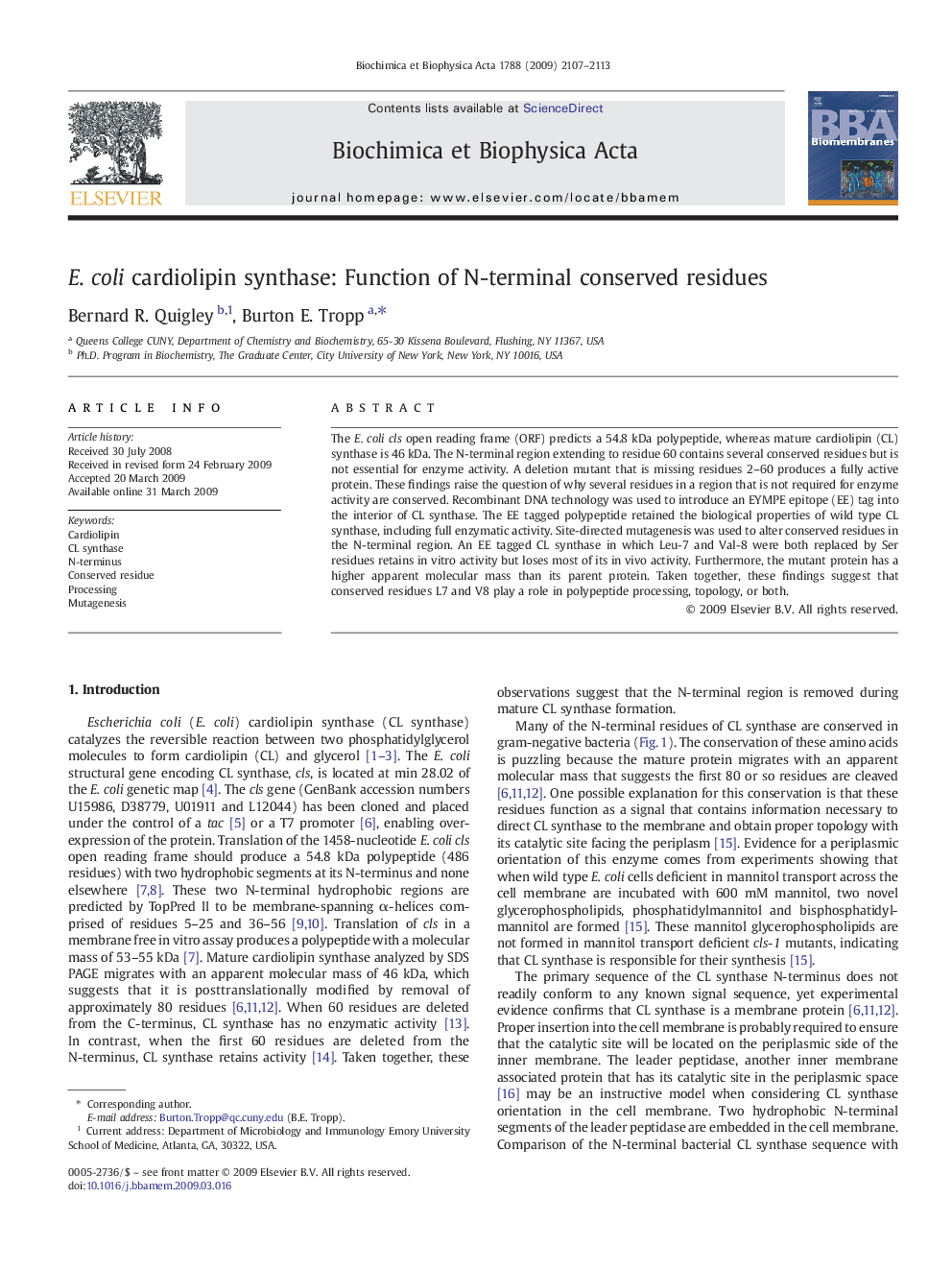| Article ID | Journal | Published Year | Pages | File Type |
|---|---|---|---|---|
| 1945009 | Biochimica et Biophysica Acta (BBA) - Biomembranes | 2009 | 7 Pages |
The E. coli cls open reading frame (ORF) predicts a 54.8 kDa polypeptide, whereas mature cardiolipin (CL) synthase is 46 kDa. The N-terminal region extending to residue 60 contains several conserved residues but is not essential for enzyme activity. A deletion mutant that is missing residues 2–60 produces a fully active protein. These findings raise the question of why several residues in a region that is not required for enzyme activity are conserved. Recombinant DNA technology was used to introduce an EYMPE epitope (EE) tag into the interior of CL synthase. The EE tagged polypeptide retained the biological properties of wild type CL synthase, including full enzymatic activity. Site-directed mutagenesis was used to alter conserved residues in the N-terminal region. An EE tagged CL synthase in which Leu-7 and Val-8 were both replaced by Ser residues retains in vitro activity but loses most of its in vivo activity. Furthermore, the mutant protein has a higher apparent molecular mass than its parent protein. Taken together, these findings suggest that conserved residues L7 and V8 play a role in polypeptide processing, topology, or both.
